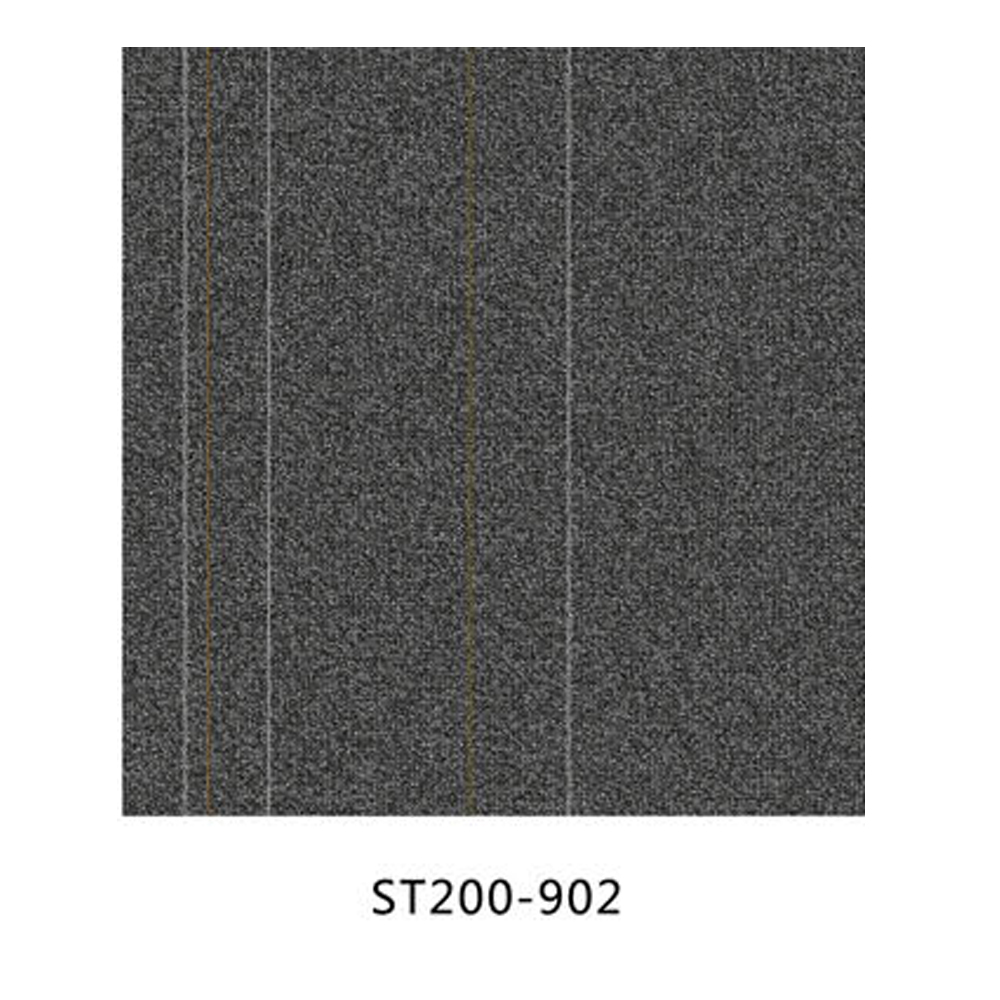Carpet tiles are generally used in high-end offices. The sound-absorbing and noise-reducing function makes the office space more comfortable. How to properly pave office carpet tiles? What are the laying methods of carpet tiles? What materials and tools are needed to install a carpet tile? Next, Ruolan, a professional office carpet tile manufacturer, will introduce in detail.

Common carpet tile bottoms on the market are divided into: asphalt bottom, PVC bottom, thickened non-woven bottom, PU soft bottom, etc. The glue used for the back installation of different carpet tiles is also different. It is recommended to use glue to lay the asphalt carpet tiles, which will be more firm. It is recommended to use water-based environmentally friendly glue for PVC tiles, non-woven carpet tiles, and PU tiles. In order to facilitate the installation of carpet tiles purchased online, environmentally friendly carpet tiles are popular in the market, which can effectively reduce the hazards of odor and formaldehyde.

Carpet installation methods are generally divided into: fixed and non-fixed.
1. Fixed carpet laying method:
Paste the carpet directly on the ground with glue, or splice the carpet into large pieces to cover the entire floor, and then fix it with wooden strips or glue around the wall.
Second, the unfixed carpet laying method:
Generally, a small piece of craft rug is spread in the living room, bedroom, and study room of the family, and it is directly laid on the ground without glue.
The office carpet tile is suitable for the fixed carpet laying method, that is, brush glue on the ground to firmly fix the carpet on the ground, so that the carpet can be spliced from small pieces into large pieces to cover the entire space. The specific steps of fixed installation of office carpet tiles are as follows:
1. Because the carpet tiles have relatively high requirements on the ground, the general ground needs to be self-leveling to ensure that there are no potholes and bumps on the ground, so as to ensure that the carpet tiles are beautiful and durable.
2. Before laying carpet tiles, the ground should be thoroughly cleaned to ensure that there is no obvious dust and debris on the ground, so that it is convenient to apply glue on the ground and ensure that the glue adheres to the back of the carpet tiles.
3. Find the starting point of laying by snapping the line, calculate the starting position of material-saving paving according to the size of the room, use the ink fountain to cross and pop up two vertical lines, and lay from the intersection point to the surroundings.
4. Determine the effect of carpet tile laying. Conventional carpet tile laying is divided into: straight laying (that is, all carpets are laid in one direction), horizontal and vertical laying (that is, carpets are laid horizontally and vertically), and Pinzi spelling (that is, the second carpet In the position of half of the first piece of carpet), random spelling (randomly spell out individual patterns). For the first three laying methods, pay attention to the wool direction of the carpet surface, and do not lay it backwards, otherwise it is easy to cause smooth wool phenomenon and color difference. There are arrows on the back of the carpet, and laying according to the direction of the arrow.
5. The ground is coated with glue, which is divided into two types: spot coating and full coating. Wait for the glue to dry for 5-10 minutes and reach the bonded state. Lay the carpet tiles. Note that each carpet tile should be squeezed tightly so that no obvious seams can be seen and the carpet tiles will not be easy to loosen.
6. When laying on the wall, doorway, and pillars, use a sharp knife to cut the carpet neatly from the back of the carpet, and lay the cut carpet well.
7. Clean up the fluff on the surface of the carpet. After the carpet is laid, tidy the fluff at the seams and rub it left and right so that the fluff on the surface of the carpet intersects and leaves no gaps on the carpet surface. At the junction of the carpet and the doorway, use a special carpet closing strip to fix the edge of the carpet to prevent hair loss and kicking up when walking.